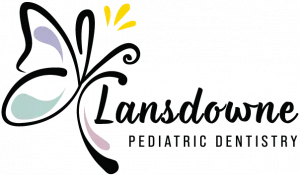Tooth displacement, also known as luxation, can be a distressing event for both parents and children. This type of dental trauma occurs when a tooth is shifted out of its normal position. Understanding the various forms of tooth displacement and knowing how to respond can make a significant difference in the outcome for your child’s dental health.
Types of Tooth Displacement
- Subluxation: The tooth is slightly loosened but remains in its socket. There may be bleeding around the gumline and some discomfort.
- Extrusive Luxation: The tooth is partially dislodged from its socket. It appears longer than adjacent teeth and is quite mobile.
- Intrusive Luxation: The tooth is driven into the socket, appearing shorter than the surrounding teeth. This type of displacement can cause damage to the tooth’s supporting structures.
- Lateral Luxation: The tooth is displaced in a direction other than outward. It may be pushed forward, backward, or to the side, and often becomes immobile due to being wedged into the alveolar bone.
Immediate Steps to Take
If your child experiences tooth displacement, following these steps can help mitigate damage and improve the chances of successful treatment:
- Stay Calm: Your child will likely be scared and in pain. Remaining calm can help soothe them.
- Assess the Injury: Check the extent of the injury. Look for bleeding, swelling, and the position of the displaced tooth.
- Rinse the Mouth: Have your child rinse their mouth gently with warm water to clean the area.
- Apply Cold Compress: Use a cold compress on the outside of the cheek to reduce swelling and alleviate pain.
- Reposition the Tooth (if possible): For extrusive and lateral luxations, you may gently try to reposition the tooth to its normal position. Do not force it. This step is crucial for preserving the tooth.
- Contact Your Pediatric Dentist Immediately: Time is critical, especially for avulsed teeth. Reach out to your pediatric dentist as soon as possible for further instructions and to arrange an emergency visit.
Treatment Options
The treatment for tooth displacement varies depending on the type and severity of the injury:
- Subluxation: Typically, these require monitoring and follow-up visits to ensure the tooth heals properly. Soft foods and good oral hygiene are recommended.
- Extrusive and Lateral Luxation: If it is a permanent tooth, then your dentist will likely reposition and stabilize the tooth using a flexible splint. Follow-up visits are necessary to monitor healing. However, if it’s a primary tooth, extraction may be recommended to protect the developing permanent tooth bud.
- Intrusive Luxation: Treatment depends on the extent of intrusion and the age of your child. The tooth may reposition itself naturally, or intervention might be required to move the tooth back into place.
Preventing Tooth Displacement
While accidents are sometimes unavoidable, certain precautions can reduce the risk of tooth displacement:
- Mouthguards: Ensure your child wears a mouthguard during sports and recreational activities. Custom-fitted mouthguards offer the best protection.
- Safe Play: Encourage safe play practices and educate your child on the dangers of roughhousing or chewing on hard objects.
- Childproofing: Make your home safer by installing corner guards on furniture and using safety gates to prevent falls for your little ones.
Importance of Regular Dental Check-Ups
Regular dental check-ups play a crucial role in preventing and identifying potential dental issues early. Your pediatric dentist can provide personalized advice on maintaining good oral health and preventing injuries. Remember, early intervention is key to managing dental trauma effectively and ensuring the best outcome for your child’s dental health. If an injury occurs, prompt and appropriate action can make all the difference in preserving your child’s smile.



